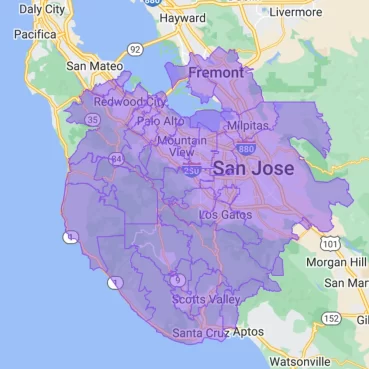Retail stores are often targets for shoplifting and vandalism, which can lead to significant financial losses and damage to a store's reputation. Implementing effective security measures is crucial to safeguarding your business, protecting your assets, and ensuring a safe environment for both customers and employees. This article provides an in-depth look at security solutions tailored to the unique challenges faced by retail businesses, with specific strategies to prevent shoplifting and vandalism.
Understanding the Threats
Shoplifting:
Shoplifting is a widespread issue that can erode a retailer’s profit margins. Thieves often target high-value or easily resellable items, and without adequate security measures, they can quickly exploit weaknesses in your store's setup. Shoplifting not only results in direct financial loss but can also increase inventory shrinkage, complicating inventory management and reducing overall profitability.
Vandalism:
Vandalism, while less frequent than shoplifting, can cause substantial damage to your store’s property, particularly in urban areas or locations with high foot traffic. Vandalism can range from graffiti and broken windows to more severe damage like arson. Beyond the physical damage, vandalism can also deter customers and create a negative image for your business.
Surveillance Cameras: Your First Line of Defense
Strategic Camera Placement:
Surveillance cameras are one of the most effective tools in preventing shoplifting and vandalism. They serve as a visible deterrent and provide critical evidence in the event of a crime. To maximize their effectiveness, cameras should be strategically placed at key points within the store, including entrances, exits, high-value aisles, and cashier areas. For external security, cameras should cover all access points and areas prone to vandalism, such as parking lots and the store’s facade.
Advanced Camera Features:
Modern security cameras come equipped with features that enhance their effectiveness. High-definition video ensures clear identification of individuals, while motion detection can alert store personnel to suspicious activity in real-time. Night vision capabilities are essential for monitoring after hours, and remote access allows managers to view live footage from anywhere, adding an extra layer of convenience and control.
Electronic Article Surveillance (EAS) Systems
How EAS Systems Work:
EAS systems are designed to prevent theft by attaching electronic tags to merchandise. These tags are deactivated at the point of sale. If someone attempts to leave the store with an active tag, an alarm is triggered, alerting staff to the potential theft. EAS systems are particularly effective in deterring opportunistic thieves who may be less likely to steal if they know the merchandise is protected.
Choosing the Right EAS System:
The effectiveness of an EAS system depends on selecting the right type for your store. Hard tags are typically used for apparel and other durable goods, while soft tags or sticker tags are suitable for items like books, electronics, and cosmetics. It’s also important to consider the placement of EAS gates—positioning them at all store exits ensures comprehensive coverage.
Physical Barriers and Store Layout
Protecting Store Exteriors:
Vandalism often targets a store’s exterior, including windows, doors, and signage. Installing shatterproof glass or applying protective window films can minimize damage from attempts to break in or vandalize the property. In areas with a high risk of vandalism, security gates or roll-down shutters can provide an additional layer of protection when the store is closed.
Optimizing Store Layout:
The layout of your store can significantly impact its security. Open layouts with clear sightlines make it easier for staff to monitor customer behavior and spot potential shoplifters. High shelves and obstructed views can create blind spots that shoplifters might exploit. Additionally, placing high-value items in areas that are easily observable by staff can deter theft.
Employee Training and Awareness
Training Staff to Recognize Threats:
Your employees are on the front lines of your store’s security. Regular training sessions should be conducted to educate staff on recognizing suspicious behavior, such as loitering, unusual movements, or individuals who appear nervous. Employees should also be trained on how to approach suspected shoplifters safely and when to involve law enforcement.
Empowering Employees with Tools:
Providing employees with tools such as panic buttons, radios, or mobile apps that connect directly to the store’s security system can empower them to act quickly in the event of an incident. Having clear protocols in place for different types of security threats ensures that all staff members know exactly what to do in any situation.
Lighting and Environmental Design
The Role of Lighting in Security:
Proper lighting is essential for both deterring criminal activity and ensuring that surveillance cameras capture clear footage. Well-lit stores are less appealing to vandals and thieves, who prefer to operate under the cover of darkness. Ensure that all areas of the store, particularly entrances, exits, and parking lots, are adequately lit. Motion-activated lights can further enhance security by drawing attention to any movement in critical areas.
Environmental Design Considerations:
Crime Prevention Through Environmental Design (CPTED) principles can be applied to enhance your store’s security. This involves designing the physical environment in ways that reduce the likelihood of crime. For example, maintaining clear sightlines, eliminating hiding spots near entrances, and using landscaping strategically to direct movement can all contribute to a safer retail environment.
Integrating Security with Store Operations
Access Control Systems:
Restricting access to certain areas of the store, such as stockrooms and offices, can prevent internal theft and unauthorized access. Access control systems that use key cards, biometric scanners, or PIN codes can help manage who has access to these sensitive areas.
Alarm Systems and Monitoring:
Integrating your security cameras, EAS system, and access control into a central monitoring system allows for real-time alerts and quick responses to any security breaches. Many modern systems offer remote monitoring options, where alerts are sent directly to your phone or to a professional monitoring service that can dispatch security personnel or contact law enforcement if needed.
Customer Service as a Deterrent:
A proactive customer service approach can also act as a deterrent to shoplifting. Greeting customers as they enter the store, offering assistance, and maintaining a visible presence on the sales floor can make potential shoplifters uncomfortable and less likely to attempt theft.
Security solutions for retail stores must be comprehensive and tailored to address both internal and external threats. By implementing a combination of surveillance cameras, EAS systems, physical barriers, proper lighting, employee training, and integrated security technologies, retail businesses can significantly reduce the risk of shoplifting and vandalism. These measures not only protect your assets but also enhance the overall shopping experience for your customers, helping to maintain a safe and welcoming environment.
For retail businesses looking to bolster their security, Guardyx offers customized solutions designed to meet the specific needs of the retail environment. Our team of experts can assess your store's vulnerabilities and recommend the most effective strategies to protect your business. Contact us today to learn more about how we can help you prevent shoplifting and vandalism, ensuring your store remains secure and prosperous.




